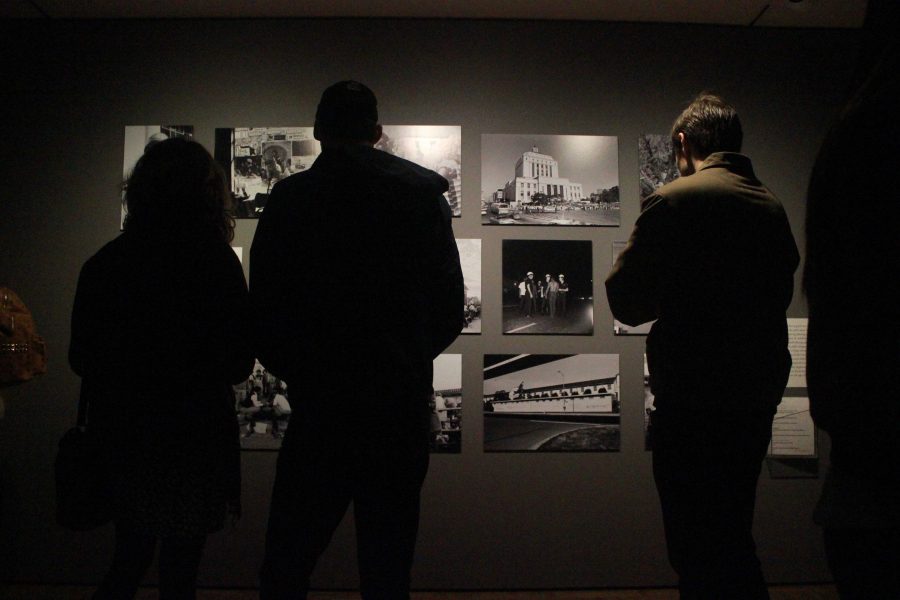At the Oakland Museum: The Complex and Controversial Black Panthers
BY GRANT BONHAM

The walls of the Black Panther exhibit at the Oakland Museum, in Oakland, Calif., were stark with pain and hardship yet vibrant with brave expressions of life and color against an oppressive and grey American government. Masterful drawings and paintings coated a magazine-covered wall, and around the rest of the exhibit were historical pieces and photographs from the 1960s, the Black Panther Party's era. The exhibit was bright, beautiful, and unforgettable, which juxtaposed ironically considering how little modern history regards the Black Panthers. I had always been taught the same thing: the Black Panthers were militaristic and deadly. But this is false. By the end of the exhibit, one thing was abundantly clear: we need the Black Panthers now more than ever.
My knowledge of the Black Panthers before viewing the exhibit was incredibly thin. My high school history classes taught small, intentional deceptions about their militaristic ways. I thought of them akin to a guerilla army that spread fear using a black nationalist agenda. But this negative portrayal of the Black Panthers was intentional and deceptive. The Black Panthers formed as a result of increased police violence towards black men across the country, donning the panther as a symbol of resistance that only fights back if provoked. Huey Newton and Bobby Seale founded the party in Oakland to hold the police accountable and to support their communities from the oppressive local and national governmental policies in the 1960s. In an incredibly short time, the Black Panthers garnered national attention. Their monthly magazine reached a subscription base of around 250,000 readers. However, their assistance initiatives to help the poor were their most helpful achievement.
The Panthers’ over 50 community-based programs had a vast and immediate impact. The strongest programs started with children. The Breakfast Program was their most widespread, operating in almost 20 major cities nationwide. The goal of the program was to provide free, filling food for all public school children who went without nutritious breakfast. The program was successful because it addressed a deep need in communities where many children simply did not have food in the morning. Other youth programs were established as well, varying from after-school programs to full on tutoring. The Panthers also provided social services, believing they would liberate majority-black communities from oppressive policies that favored whites. Free ambulance programs, weekly food allotments, health clinics, and drug and alcohol abuse programs aided many. By localizing these efforts within large cities like New York, Oakland, Chicago, and Cleveland, black communities, with the help of the Panthers, were able use these previously unaffordable services to reach a better standard of living.
What the Panthers ultimately represented was a massively involved community that was able to take back services that were stripped away by informal segregation and racist policy making. Now, more than ever, we need policies that will help minority communities flourish in the face of informal discrimination and disenfranchising policy. President Trump has shown little recognition for the different cultures throughout the United States. Large cities in the United States have always been at the forefront of tolerance and often represent bastions of safety for those fleeing religious persecution around the world. As the number of deportations rises, we see that this president will destroy these communities and separate immigrant families of the United States. The Muslim ban stranded thousands at airports; the president showed little interest in their livelihood or well-being. As the border wall on the Mexican border looms, and the executive branch abandons equally protecting transgender students, the need for strong independent communities grows. The Black Panthers, with supportive after-school programs and counseling for transgender students, could make these harmful policies less effective when no permanent solution can be found. Deportations devastate families across the United States. But by providing free legal advice and meals, these families could have a better chance when they go to court to remain residents in this country.
Alongside a plurality of services, the Panther’s organization can be effective for mobilizing voters. Paramount to our representative democracy is the assignment of representative districts in the House of Representatives and in statewide legislatures. But this process has been hijacked by one side of the political spectrum, and it has been shown that voter suppression through gerrymandering has heavily favored conservative candidates. This problem is especially oppressive to minority groups whose strength is diminished by gerrymandering that squeezes their support into smaller factions across different districts. On top of that, the passage of voter I.D. laws has proven to be harmful to minority voters as well. If an organization could prepare all their voters well in advance of elections to ensure they have the material to vote, then their voice will be much greater and turnout will increase.
The strength and resolve against policies like gerrymandering and mass deportations are found at the local level. As Americans continue to resist the actions of this president, communities with the strongest community programs will show the president that his powers are not greater than the American people. Abuses of governmental power and active executive branches have wreaked havoc on the country in the past, but it is our responsibility to come together and build a strong community resistant to such hate. I think we can look at the Black Panthers’ achievements in the 1960s as an example of how to organize and protect a community from persecution.
